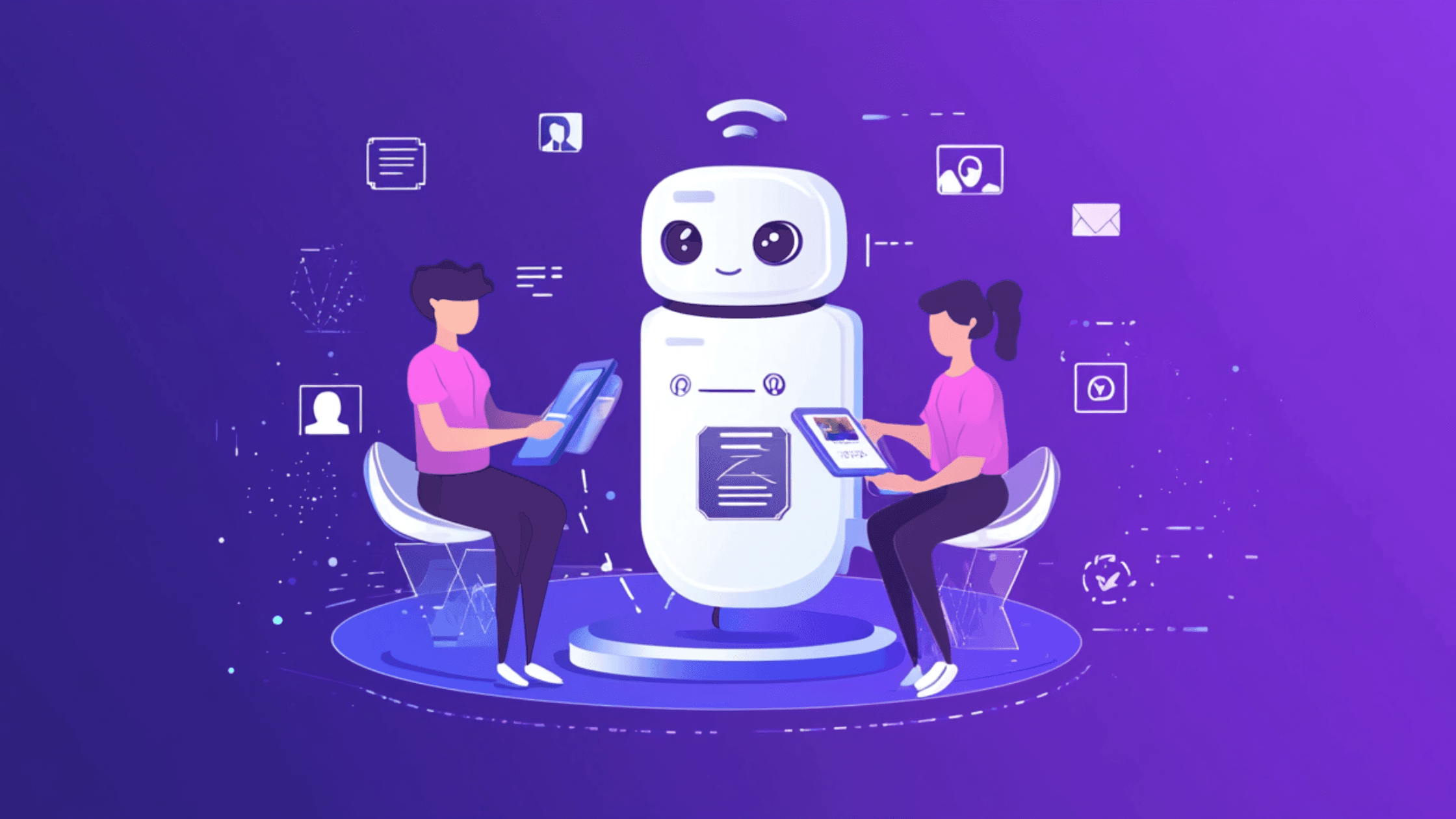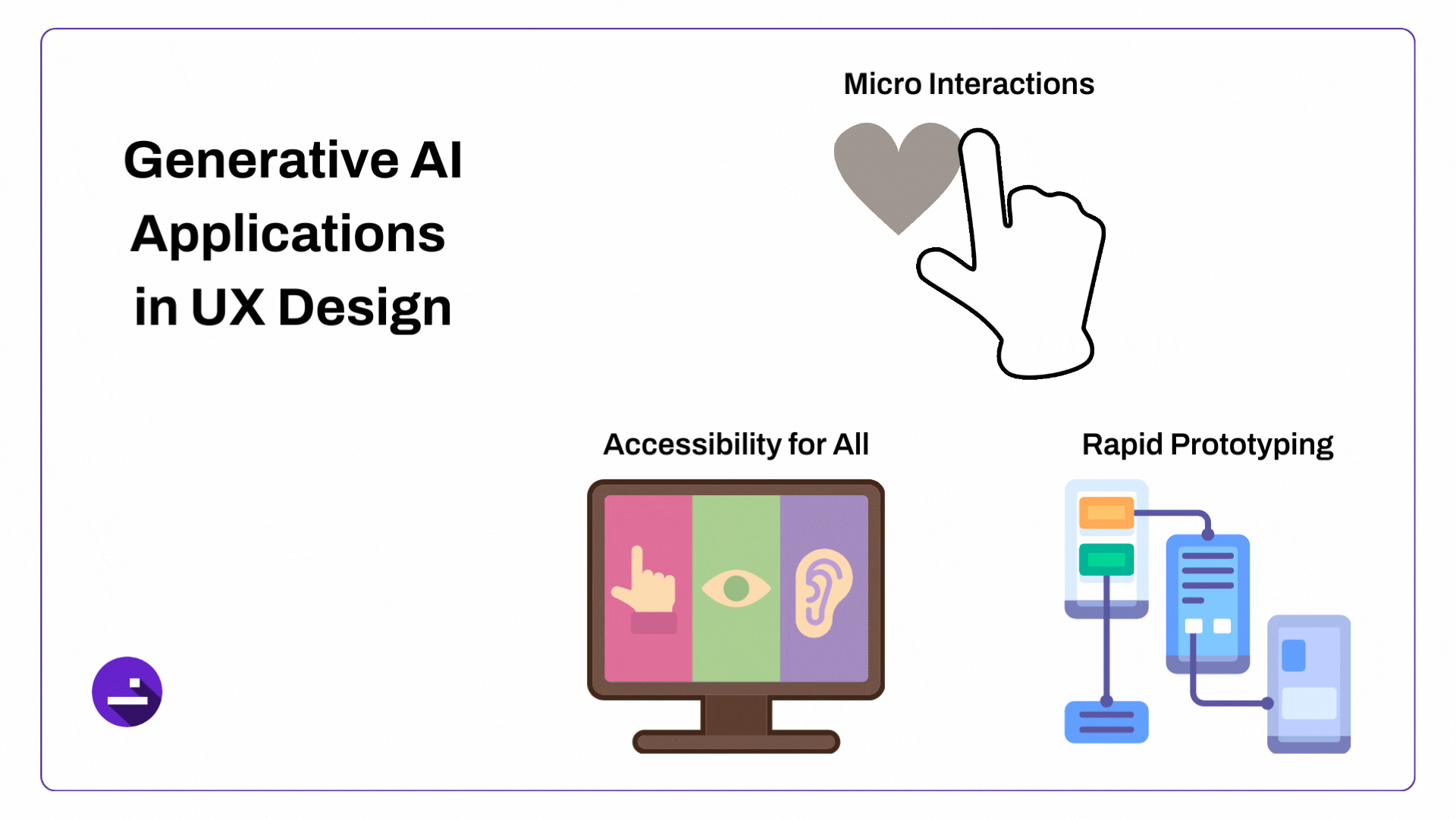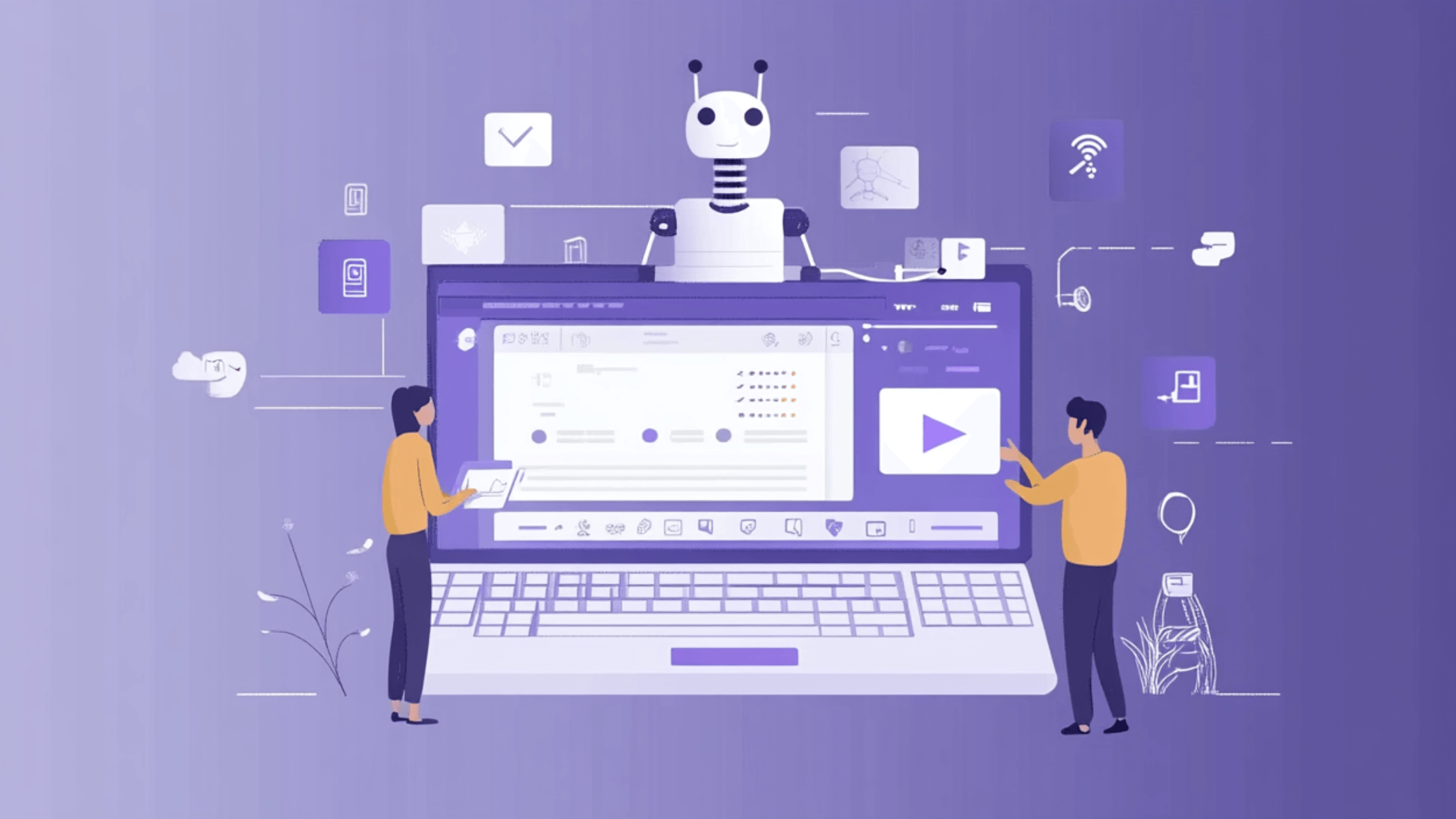A couple of years ago, the launch of ChatGPT changed everything, leading to the evolution of AI technology. And it seems like there is always one or another thing to learn and acknowledge. The rapid advancements in AI have led to a new era for multiple industries, and the domain of UX is no exception.
So, integrating Gen AI in UX design is a real game-changer, helping automate multiple aspects of the design process and improving the overall user experience.
From personalized design recommendations to rapid prototyping and accessibility improvements to data-driven information, AI tools help simplify the design workflow and amplify human creativity. This is why it is expected that the generative AI market will value around USD 1.3 trillion by 2032.
While generative AI helps increase efficiency, designers must understand and polish the AI-generated designs to align with their business goals and client needs.
Here, ethical notions are also significant to ensure user satisfaction, equity, and privacy in your AI-driven UX design. Well, the collaboration between AI and UX designing is the key to unlocking better user experiences and delivering data-informed and innovative designs.
Sound amazing? Are you eager to know more about this collaboration?
Well, this blog is the ultimate guide to understanding the impact of generative AI in UX design.

Understanding Generative AI
Generative AI uses multiple machine learning algorithms skilled in datasets of existing design principles, user behavior, and designs. These algorithms help AI to produce complete new UI elements, functionalities, and layouts. For instance, think of a system that can produce various, original design choices based on a simple text prompt, defining the sought-after user experience—well, yes, that's the gist of generative AI. Also, generative AI is far more than just automation.
In the field of UX design, generative AI is applied to multiple aspects, including user research, content creation, and interface design. Hence, the capabilities of these models to generate top-notch design and content solutions provide a revolutionary approach to your UX team.
How Generative AI Helps Improve UX Design?
Generative AI provides a transformative approach to UX design that designers adore. They also provide business owners and marketers with a suite of robust, advanced tools to enhance their digital presence. Let’s see how:
Real-time Data
With generative AI, your app or website is always improving for the better. It learns from the real-time data gathered on how users utilize your site and modifies accordingly to keep things user-friendly and up to market standards.
Auto-Layouts
It also takes utmost care of the boring stuff like fixing layout issues and resizing images, so you only can emphasize making your site easy to navigate and awesome.
Experiments with Layouts
It inspires you to think more innovatively and try out fresh ideas for your site’s UX design. You can experiment with different layouts and styles until you find the perfect one that stands out.
Multi-screen Compatibility
Generative AI also ensures that your site loads within a second works seamlessly on any device, and most importantly is screen-compatible. That way, users can find what they’re looking for easily and fast, improving your rank in search engines.
Personalization
Also, it's smart enough to customize your app or website for every user based on their preferences. This way everyone feels like it was made just for them, increasing your client retention rates.
Applications of Generative AI in UX Design
The perspective of generative AI is simply not theoretical. Here are some fascinating ways it has been transforming UX design in the real world:

Captivating Microinteractions
Generative AI helps build subtle yet impressive micro-interactions, improving user engagement. For instance, LottieFiles utilizes artificial intelligence to assist designers in developing and customizing trivial animations for menus and buttons. This enables designers to opt for the perfect design and elevate the overall user experience.
Accessibility for All
Designing for better accessibility can be a challenging task. So, generative AI tools like Microsoft's AI for Accessibility help generate UI elements automatically that adhere to accessibility standards, also providing a seamless experience to users with disabilities. This can equalize access to technology and build a more dynamic digital world. These tools also help examine and suggest any kind of modifications for simple navigation, text readability, and color contrast.
Rapid Prototyping
Generative AI tools like Figma and Uizard acquire AI-powered features that help designers produce multiple, high-fidelity UI prototypes based on a single set of requirements. This encourages quick iteration, simplifies the design process, and allows for better exploration of different design concepts.
Suggested Read
Role of AI in UX Design - How Artificial Intelligence Impacts UX
View Blog
Challenges of Using Generative AI in UX Design
There are always two sides to the coin, so let’s understand the flip side too. Following are the major challenges designers might face when using Generative AI for UX design:
Job Displacement: Generative AI can impact the role of UX designers as AI-based content is getting more complex.
Emphasizing Upskilling: Designers who are less or not at all upskilled in terms of knowing how to use AI will eventually be less effectual and might suffer challenges shortly.
Losing Hands-On Approach: Gen AI can even lead to the loss of human touch like experimental learning, active participation, etc., as more and more designers today rely on AI-generated content. Depending largely on AI in innovative design processes may dissolve the human element and legitimacy in content and art.
Ethical Issues: Generative AI can sometimes raise ethical problems. It comes with certain ethical challenges in transparency, content ownership, discrimination, misinformation, privacy, and bias. Addressing these issues needs responsible utilization of AI technology.
The Future of Generative AI in UX
The future of generative AI in UX is bright like a sun, with ongoing developments that will further help improve its capabilities. Integration with modern technologies like seamless incorporation with user research tools, more sophisticated generative models, and enhanced natural language processing, will continue to boost innovation in UX design.
1. Collaboration and Creativity
Generative AI will probably become a joint partner in the design process, working with human designers hand-in-hand to push the parameters of UX design and research new and innovative possibilities. This partnership will lead to more user-focused and creative design solutions.
2. Enhanced Personalization
As AI models are getting more sophisticated, personalization reaches new horizons. Future generative AI solutions provide on-the-fly customization experiences based on an in-depth understanding of individual user behavior and preferences.
3. AI-Driven Design Systems
Future generative AI tools might smoothly integrate into design solutions, also automating routine tasks and providing real-time design suggestions. This integration will simplify the design process, helping designers to emphasize higher-level strategic and creative work.
Take the Leap with SoluteLabs!
Generative AI is a groundbreaking technology for UX design. It acquires robust tools for enhanced content development, personalized user experiences, and automated design generation. While challenges such as ethical considerations, quality control, and data privacy, still pertain, the possible advantages of generative AI are considerable.
As technology is consistently evolving, generative AI plays a key role in shaping the future of UX design. By deploying these tools creatively and responsibly, designers can generate more effective, personalized, and engaging user experiences that accomplish the ever-changing user needs.
So, with AI evolving, UX design will witness a closer partnership between AI and human innovation, encouraging a promising future for better user experiences. So, if you’re looking to create a unique UX design while incorporating generative AI, choose SoluteLabs. Our experts help build top-notch digital solutions with AI, helping your business grow. We help bridge the gap between great ideas and impactful digital products with a data-driven, user-centric approach.
Want to turn your dream into reality? Contact our experts today!







